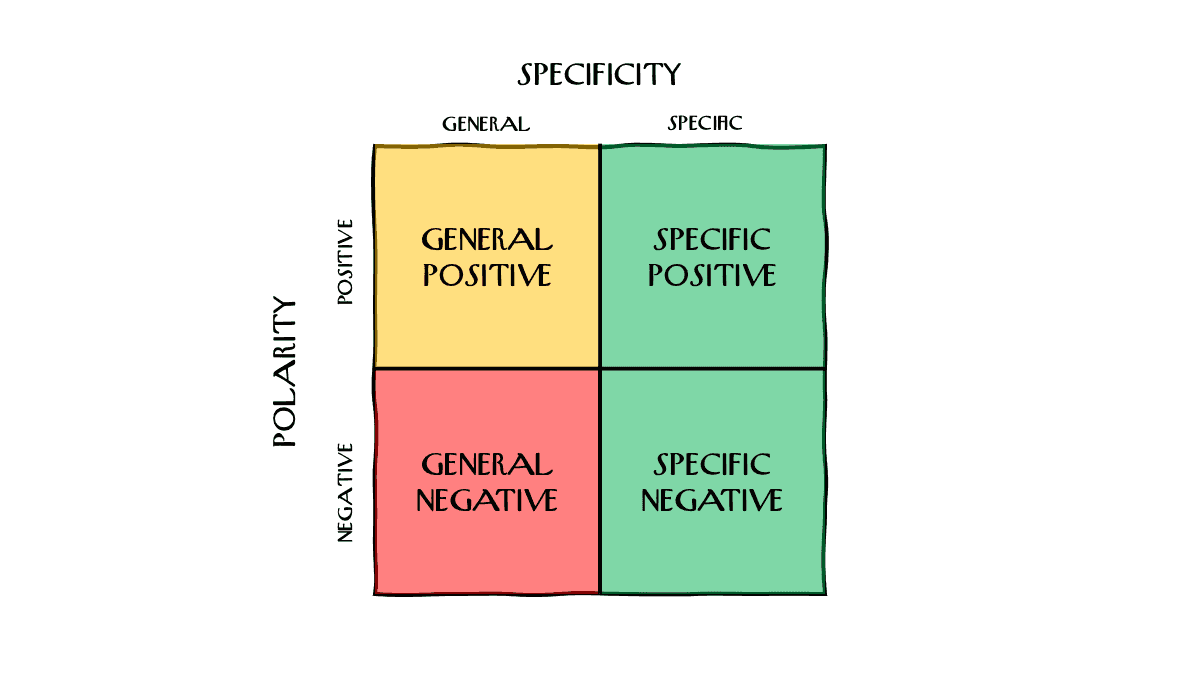Feedback for Humans
Delivering constructive criticism

Bats aren’t blind. Paradoxically, their vision is better than most humans, but since they operate in the low light of caves and at nightfall, they rely on echolocation to enhance their vision. The auditory feedback enables them to hunt, navigate, and survive. Knowledge workers need similar feedback to validate how they interact in the workplace. Without personal performance feedback, a product manager can live a delusional existence.
Yet, delivering feedback is uncomfortable—whether to one’s reports, peers, or boss. The discomfort of giving feedback—worrying that it will be taken the wrong way and fray the relationship—causes us to avoid criticism altogether. But the price of not delivering feedback is akin to stripping a bat of its echolocation abilities and letting it haphazardly slap against stalactites and starve.
A product manager is a leader, and a leader does not turn away from discomfort. We can consider a few frameworks to overcome the anxiety around delivering feedback. Like any framework, the three below serve as training wheels to help us navigate uncertain terrain.
Fearless Feedback
The Apple Store Genius Bar was a revolutionary customer support experience when it launched in 2001. Tech-savvy “geniuses” helped customers use and troubleshoot the products in the store. Their approachable, friendly demeanors ensured a customer didn’t feel “stupid” for struggling with a device. They exhibited high ownership of problems—aiming to deliver a solution in one trip instead of the standard support tactic of passing the buck.
In the Apple Store’s “secret” employee training manual was a simple operating model for employee performance reviews: Fearless Feedback. This model had two dimensions of feedback: polarity and specificity. On the polarity axis, feedback could either be positive or negative. On the specificity axis, feedback could be either general or specific.

General feedback is net-neutral at best. General positive is well-intentioned and harmless—“You’re doing a good job!”—but ultimately worthless, as it doesn’t tell the person how they did a good job.
General negative feedback is mean and harmful—“You’re doing terrible work!”—and should never be used, as nothing productive comes from this flavor of feedback.
Specific feedback, however, is essential. Employees are encouraged to deliver timely feedback that targets tangible behavior. “Awesome job helping that lady troubleshoot her iPad’s Wi-Fi issue! I noticed you validated her frustration with connectivity and taught her practical tips to ensure she can self-help next time she joins a new network.” Specific feedback like this helps the employee feel seen and learn what actions were effective so they can repeat them in the future.
The same is true of specific negative feedback. “I noticed your recent interaction with the iPad lady was tense. I could tell she was already frustrated when she walked in the door, but telling her to Google the answer wasn’t a productive suggestion since she had come to you for help. Next time, please validate her concern and teach her how to check Wi-Fi settings.” This feedback is constructive as it highlights the poor performance and recommends appropriate behavior.
Deliver specific feedback.
Continue and Consider
General Electric (GE) was renowned for developing leaders for decades, and I was fortunate to spend my early career there. Leadership excellence was imbued throughout the company culture, and performance development was no exception. GE believed that feedback should be action-oriented, so they introduced a simple framework that made it easy for everyone to provide. It involved two words:
- Continue = behaviors that are working and one should keep doing
- Consider = behaviors that are not working and could be stopped or changed
This simple reframing of positive to continue and negative to consider relieved the concepts of their incumbent connotations, inviting employee participation. The framing requires the specificity of Fearless Feedback without the polarity definitions that incite anxiety.
Additionally, the feedback tool was open year-round—instead of once annually—and allowed 360-degree sharing—peer-to-peer, manager-to-report, and report-to-manager—so a broader and more representative sample of feedback on individuals’ performance occurred.
Make feedback action-oriented.
Losada Ratio
Even with specific and well-framed feedback, the right balance of affirmative and constructive feedback can be challenging. Psychologist Marcial Losada sought to discover the optimal ratio in his research at the University of Michigan in 1999. The study initially stated that 2.9 positives for every one negative feedback (2.9:1) was ideal for optimal individual performance. However, peers later revoked the statistical approach, and additional research concluded that 5.6 positives per one negative feedback (5.6:1) was the ideal ratio to maximize human labor output.
Put in such clinical terms, this approach to feedback giving can feel inhumane. But we shouldn’t dismiss this research because it has a human-centric finding: Asymmetric feedback matters. People must stay motivated and encouraged, so a bias toward positive feedback suits both the individual and the business. The specific number doesn’t matter much (3, 5, or 6 positives per negative), but we should aim to share more positive feedback than negative for the well-being of coworkers.
Aim to give five positives for every negative feedback. In other words, five continues for every consider.
If a bat hits a wall with every other flap of their wings, they’ll get hurt and give up flying altogether. Bats need positive feedback to thrive, and humans are no different.
The best feedback is specific, action-oriented, and asymmetrically balanced to five continues for every consider.